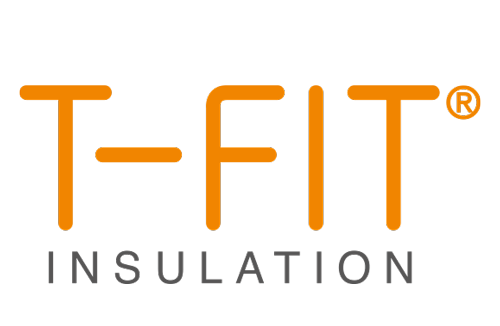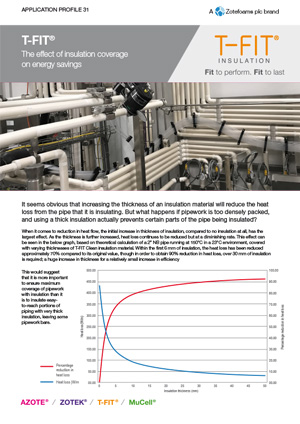T-FIT Application profile 31-Energy savings
It seems obvious that increasing the thickness of an insulation material will reduce the heat loss from the pipe that it is insulating. But what happens if pipework is too densely packed, and using a thick insulation actually prevents certain parts of the pipe being insulated?
When it comes to reduction in heat flow, the initial increase in thickness of insulation, compared to no insulation at all, has the largest effect. As the thickness is further increased, heat loss continues to be reduced but at a diminishing rate. This effect can be seen in the below graph, based on theoretical calculation of a 2” NB pipe running at 150°C in a 23°C environment, covered with varying thicknesses of T-FIT Clean insulation material. Within the first 6 mm of insulation, the heat loss has been reduced approximately 70% compared to its original value, though in order to obtain 90% reduction in heat loss, over 30 mm of insulation is required; a huge increase in thickness for a relatively small increase in efficiency.
This would suggest that it is more important to ensure maximum coverage of pipework with insulation than it is to insulate easy-to-reach portions of piping with very thick insulation, leaving some pipework bare.

